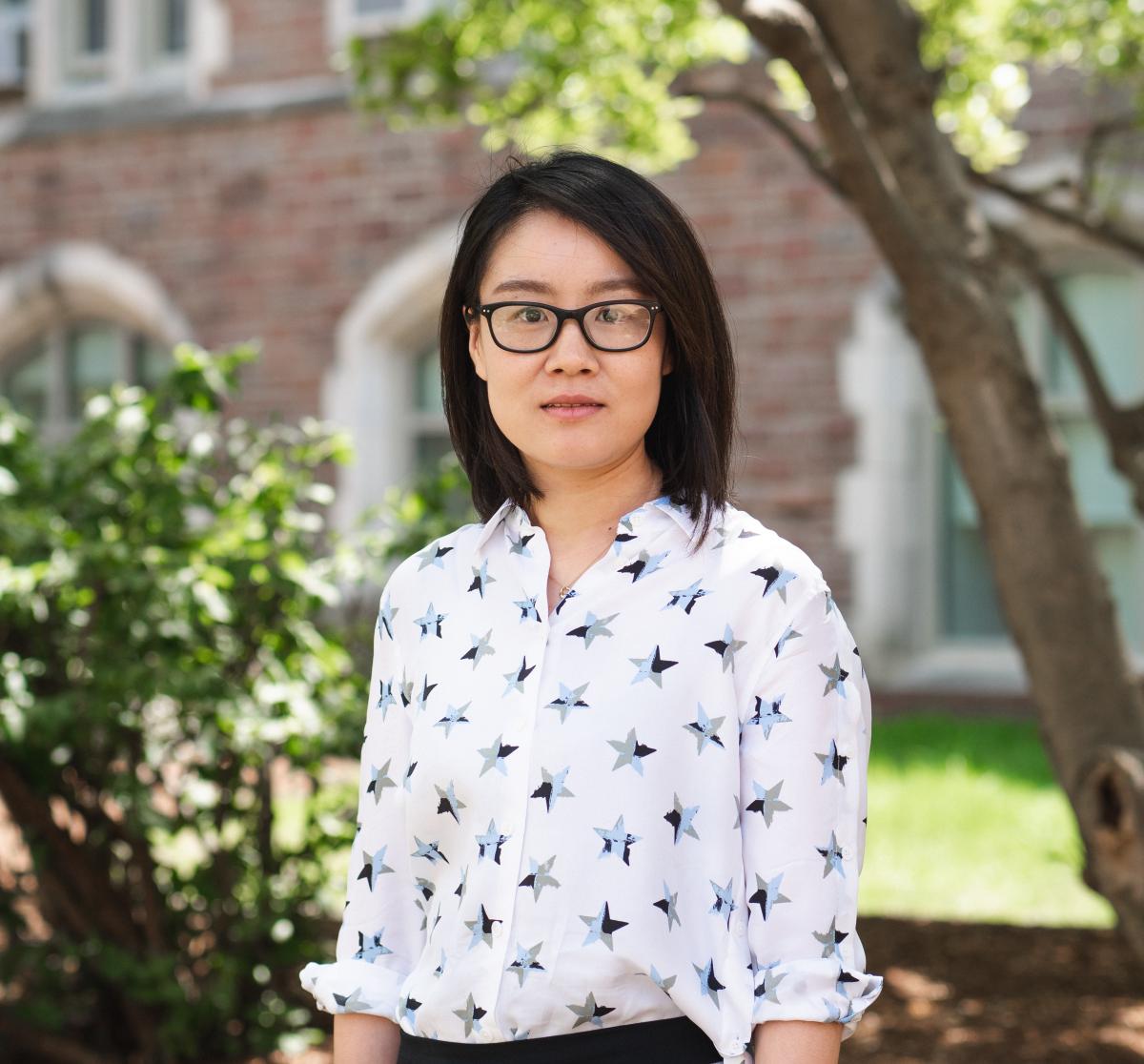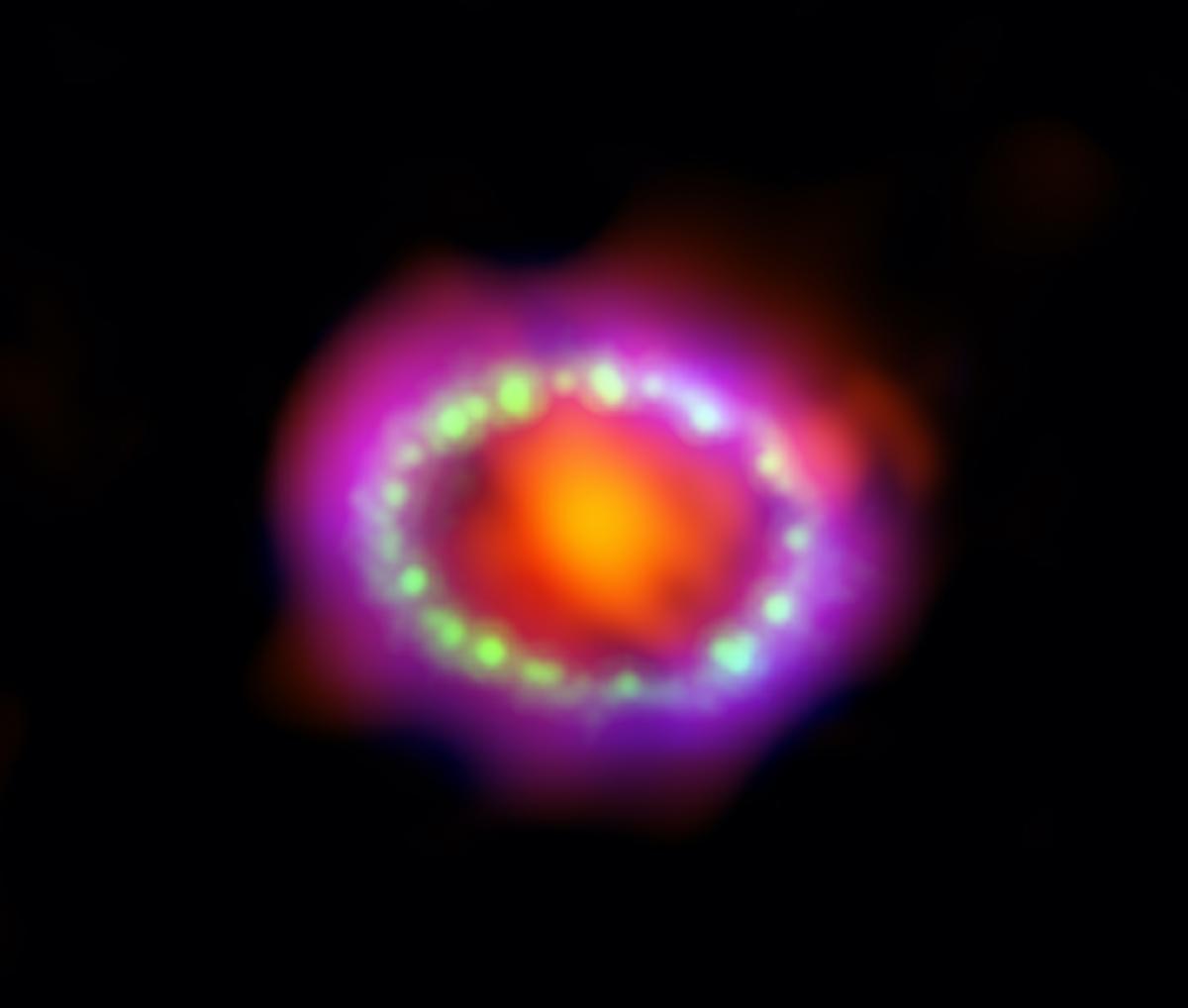In this Q&A, Katharina Lodders and Nan Liu describe their award-winning work in planetary sciences and meteoritics.

Katharina Lodders, research professor of earth and planetary sciences, and Nan Liu, research assistant professor of physics, recently won awards from the Meteoritical Society, an international organization focused on research and education in planetary sciences and meteorites with an emphasis on understanding the origin of the solar system. Lodders is receiving the 2021 Leonard Medal, the society’s highest award for outstanding contributions to the science of meteoritics and closely allied fields, for her work on the condensation of presolar grains in stellar atmospheres and her compilation of the solar system abundances of the elements and the condensation temperatures of the elements. Liu is receiving the 2021 Nier Prize, an early career award for outstanding research by a young scientist, for her contributions to the field of presolar grains and nucleosynthesis.
In this Q&A, Lodders and Liu describe their paths to the awards and look ahead to what’s next in their research.
What do you consider your most meaningful contribution to the field of planetary science?
Lodders: Two of my major research contributions are the solar system abundances of the elements and the condensation temperatures of the elements in astronomical environments. I'm a chemist by education, so these topics naturally appealed to me. Both are important ingredients for understanding how planets and other small objects formed in the solar system and around other stars.

Liu: My most important contribution so far has been combining multi-analytical techniques to study the isotopic compositions of presolar grains to gain insights into stellar processes. These presolar grains came from different types of stars and can be identified in primitive extraterrestrial materials such as meteorites by their extremely anomalous isotopic compositions. By analyzing their isotopic compositions, we can figure out how elements are made in different types of stars and then constrain our stellar model calculations. Combining two common analytical techniques (a scanning electron microscope and a micro-Raman microscope), I’m able to study a large number of rare dust grains formed during spectacular astronomical events such as supernovae.
How aware are you of each other’s work? How has it been significant for your own research?
Lodders: Nan and I share an interest in the elemental and isotopic composition of presolar grains. These are exotic dust grains that formed around dying stars and made it through the interstellar medium into the molecular cloud from which our solar system formed.
Liu: Katharina’s work on solar system abundances and condensation calculations is fundamental to my research. You have to know the solar system abundances to do stellar model calculations, because everything is measured relative to our solar system. Katharina did an amazing job in calculating the relative abundances of each isotope for the whole periodic table. It’s a reference point for my field.
Lodders: In my research I’m also interested in how many different stellar sources contributed to the element mix in our solar system and the isotopic composition of the stellar sources like supernovae and giant stars. Isotopic studies on presolar grains that Nan is doing are the hard proof for theoretical nucleosynthesis models, and I always have been in favor of models that are backed-up by measurements in natural samples.
Liu: Though we haven’t worked together on a project yet, Katharina and I have had great conversations. Her input on research questions and projects has been incredibly valuable. That interdisciplinary collaboration is one of the best things about being at WashU and being affiliated with the McDonnell Center for the Space Sciences.
How does winning this award, which recognizes a major career milestone, influence how you think about your career trajectory?
Liu: When I first learned that I had won the Nier Prize, which is such a major award, I was really excited. It’s been one of my dreams for my career. Now that my dream has come true and the excitement has worn off a little, I’ve started to feel pressure for what’s next. This is an amazing confirmation of my past work, and now I’m motivated to work harder in the future.
Lodders: I'm very honored for being selected for this high award by the Meteoritical Society, and I'm very thankful to my colleagues for recognizing my work this way.
What’s next for you and your research?

Liu: My next project is based on my previous work developing techniques to identify rare presolar grains. Most of these grains came from low-mass stars. Only one in 100 presolar silicon carbide grains came from supernovae, but with this new technique, we can rapidly identify a large number of supernova dust grains at much reduced cost. I also developed a technique using radioactive isotopes to constrain the condensation timescales of supernova dust grains. This tells us about how carbon-rich grains grow after a supernova explosion – in what kind of stellar environment did these silicon carbide grains form?
Combining these two previous studies, I’m on my way to getting more supernova dust grains and analyzing their isotopic compositions. This will help us determine how dust condenses after supernova explosions, which we need to understand in order to understand the contribution of supernovae to the dust reservoir in the interstellar medium. In turn, that constrains the contribution of supernova dust materials to the formation of our own solar system, an important research question in astronomy, astrophysics, and cosmochemistry.
Lodders: Thanks to funding from the NSF and support from the McDonnell Center for the Space Sciences, my work on elemental abundances and chemical modeling is at a stage where I can apply it to several problems in cosmochemistry. One large area that needs more scrutiny is the representative isotopic composition of the elements for the solar system. The scary part in research is when you see how much we do not know well or not at all. Some elements are very difficult to measure in the sun and other stars with current technologies; other elements are hard to measure reliably in meteorites and only a few measurements may exist. On the other side, computational models are only as good as the input quantities, and sometimes estimates have to suffice if no measurements exist. On the bright side, more measurements for elemental abundances and for chemical and physical properties are done. That's the great advantage in interdisciplinary work – data from many different fields can be used and applied to solve problems in astronomy, cosmochemistry, and planetary sciences.





